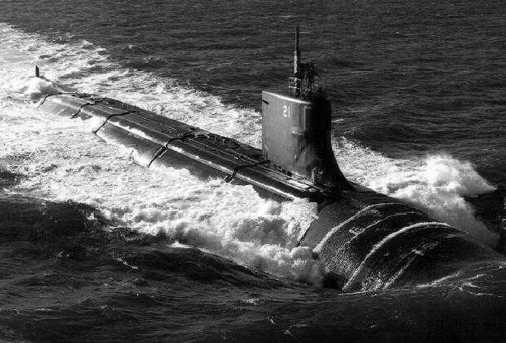launchers, two 5r/54 caliber Mk-45 lightweight guns,
two Phalanx 20mm CTWS mounts and six 25mm
Mk 38 machine guns. The USS Belleau Wood (LHA 3)
(fig 8-23) and the USS Peleliu (LHA 45) (fig. 8-24) are
examples of amphibious assault ships.
The Wasp-class LHDs are designed to embark,
transport, and land 2,000 troops and their equipment
using transport helicopters in conjunction with a beach
assault. The Wasp-class ships are the largest
amphibious ships in the world (fig. 8-25). Their
vertical envelopment is more effective than older
methods of amphibious landings. One feature of this
class of ships is the ability to commit the landing
force in an assault without being limited to favor-
able beaches. These ships allow establishment of
beachheads in enemy territory more quickly than
older methods. When not in used for amphibious
assaults, LHDs have the capability to assist in
antisubmarine warfare.
Amphibious transport dock. Amphibious
transport docks (LPDs) are versatile ships. They
perform the mission of amphibious transports,
amphibious cargo ships, and older LSDs. The Navy’s
newest class of ships are scheduled to replace the
Navy’s amphibious fleet. The LPD (fig. 8-26) is a highly
reliable, warfare-capable ship, as well as the most
survivable amphibious ship ever put to sea. The LPD
incorporates the latest quality of life standards for the
embarked Marines and Sailors—they accommodate
women as part of the crew and embarked troops.
Dock landing ships. Dock landing ships (LSDs)
(fig. 8-27) were designed to transport and launch a
variety of amphibious craft and vehicles with embarked
crews and troops. All landing craft operate from a well
deck that is over 300 feet long and 50 feet wide. The
types of amphibious craft vary from the newer LCAC
(landing craft air cushion) (fig. 8-28) to the conventional
LCU (landing craft utility) or LCM (landing craft
mechanized). The number of amphibious craft
embarked will vary, depending on the type of craft and
class of ship.
The newer class of LSD is capable of transporting
and operating four LCACs while the older classes may
embark only three. A newer variant of the LSD will be
designed to handle only two LCACs but will have a
larger cargo capacity. These ships also have a helicopter
platform over the well deck that allows them to conduct
limited helicopter operations.
8-22
Student Notes:
Figure 8-22.—USS Seawolf (SSN 21).

